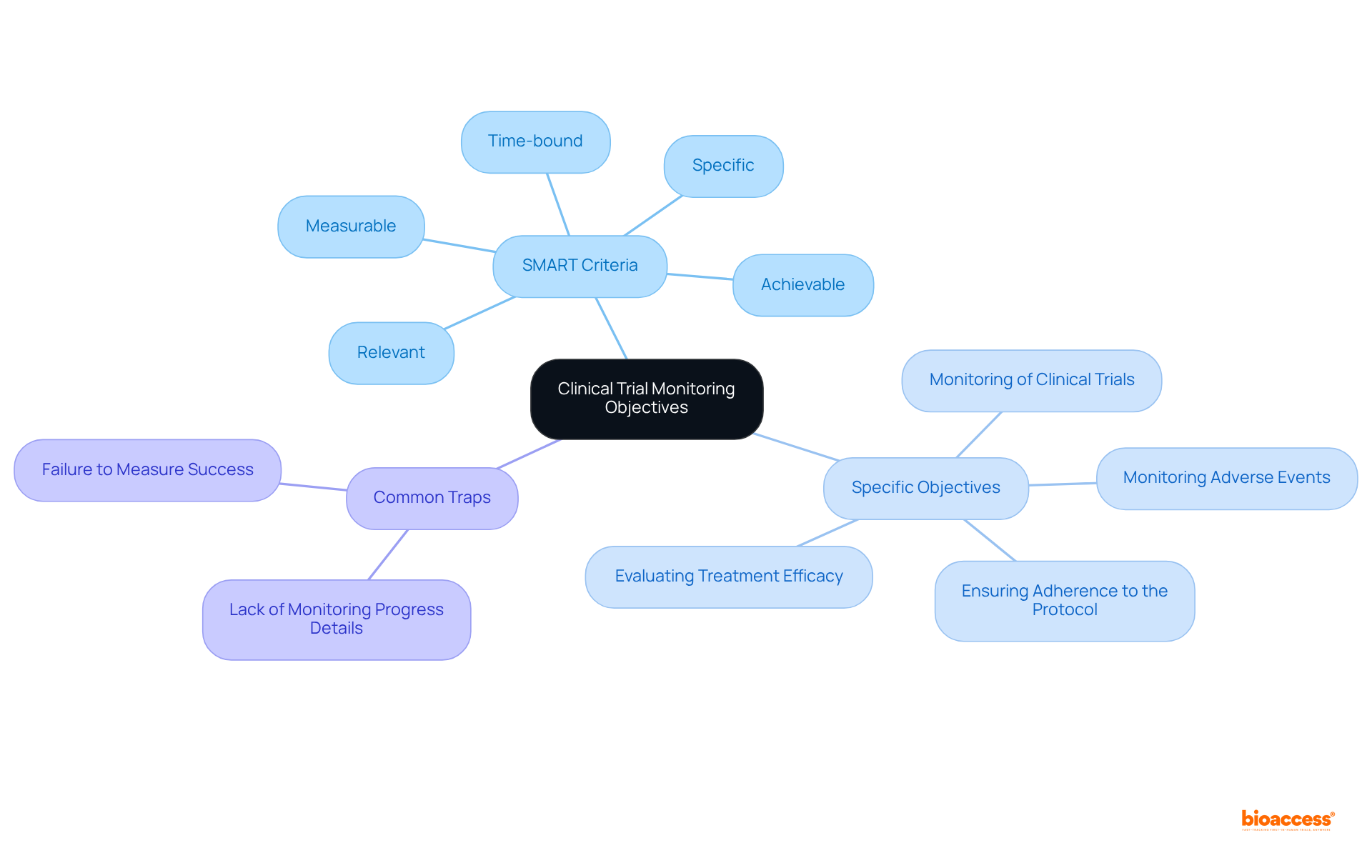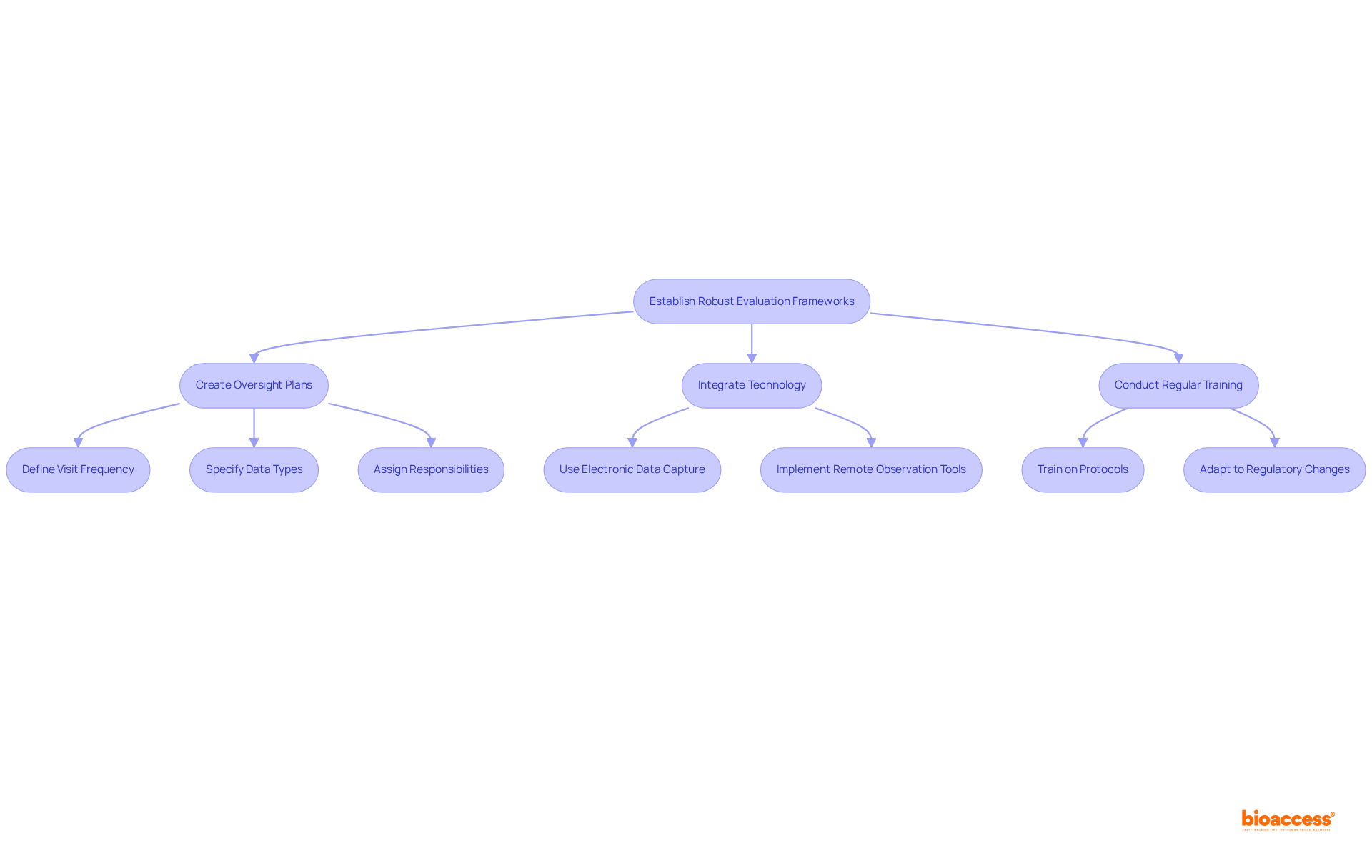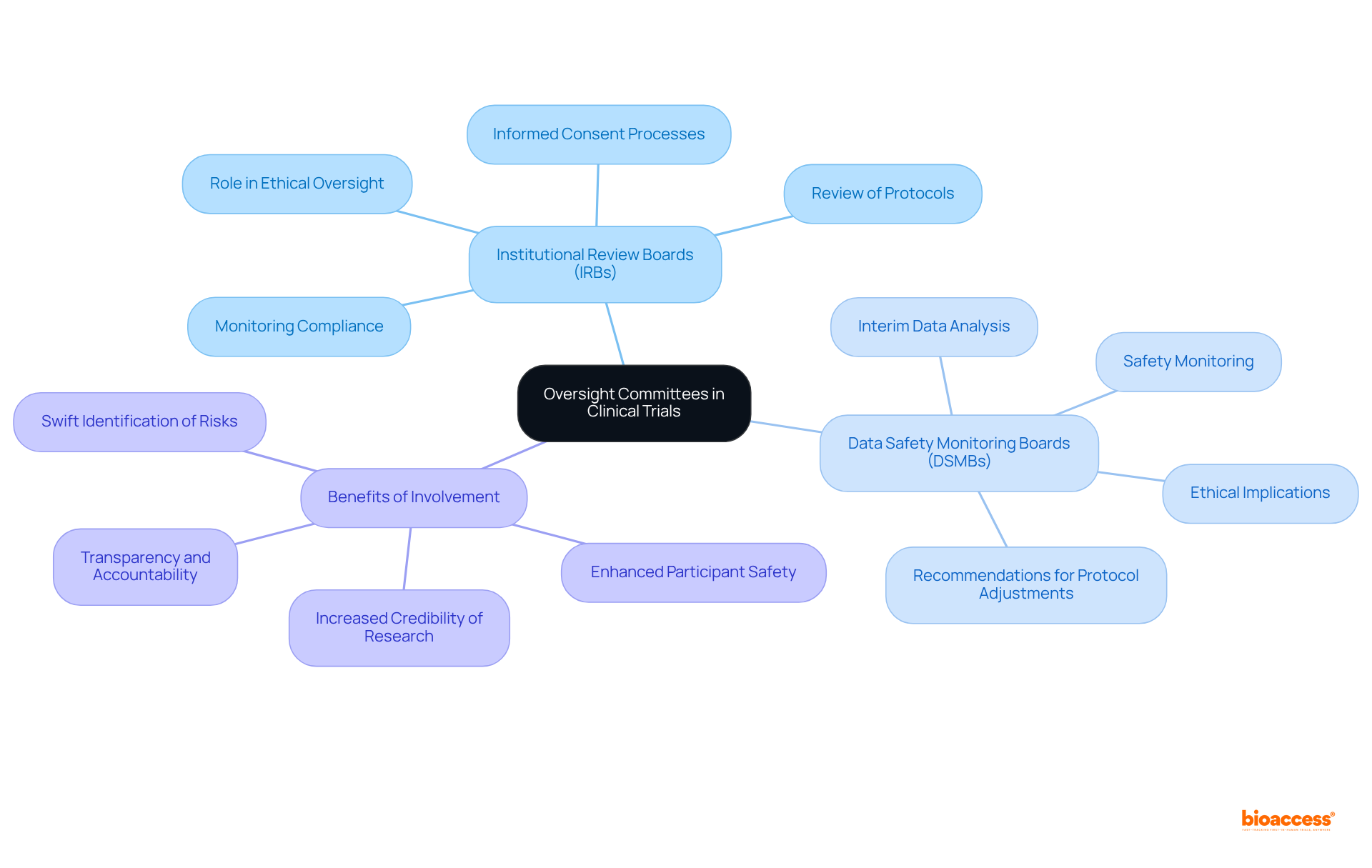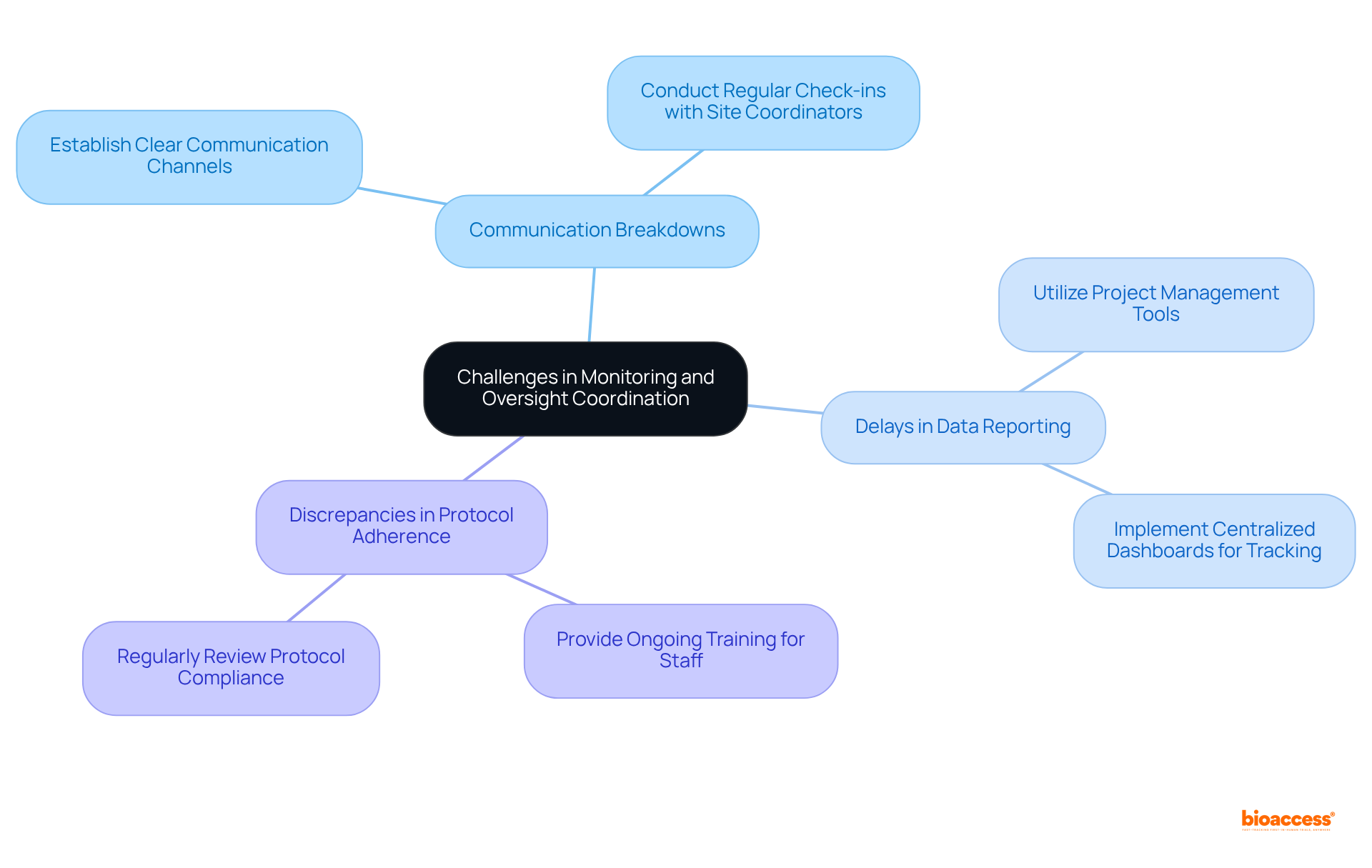


The article delineates four pivotal strategies for the effective monitoring of clinical trials:
Each strategy is underpinned by compelling evidence and illustrative examples that demonstrate their efficacy in enhancing patient safety, ensuring data integrity, and maintaining compliance. Ultimately, these strategies contribute to improved outcomes in clinical research, underscoring their significance in the Medtech landscape.
Effective monitoring of clinical trials is paramount in ensuring patient safety and data integrity. Yet, many studies struggle to achieve optimal oversight. By implementing key strategies, researchers can significantly enhance their monitoring processes, leading to improved outcomes and increased stakeholder confidence.
However, the challenge remains: how can clinical trial teams navigate common pitfalls and establish robust frameworks that not only meet regulatory requirements but also foster ethical research practices?
Setting clear objectives for research assessments is crucial, necessitating the definition of specific, measurable, achievable, relevant, and time-bound (SMART) targets. These objectives must prioritize patient safety, data integrity, and regulatory compliance. For instance, a clinical study aimed at testing a new drug may establish objectives such as:
Research indicates that the SMART group scored significantly higher in establishing treatment objectives (68.5%) compared to other groups, underscoring the effectiveness of structured target setting in enhancing trial outcomes.
However, it is essential to identify common traps in objective setting. A staggering 93.5% of recorded objectives lack details regarding monitoring progress, and less than 25% identify how success would be measured. This emphasizes the necessity for meticulous planning and implementation of SMART objectives, particularly in the monitoring of clinical trials, to prevent these shortcomings.
Victoria Stewart from the Centre for Mental Health emphasizes, "Goal planning is an important element in brief health interventions provided in primary healthcare settings, with specific, measurable, achievable, realistic/relevant, and timed (SMART) goals recommended as best practice." By implementing these structured objectives, research teams can concentrate their efforts on the monitoring of clinical trials in critical areas, allowing for prompt identification and resolution of any protocol deviations. This method not only improves the overall quality of the process but also builds trust among stakeholders by demonstrating a commitment to transparency and accountability.
A case study featuring a medical study for a new medication revealed that by adhering to SMART objectives, the research team significantly enhanced patient recruitment and retention rates, ultimately resulting in a successful study outcome. The significance of SMART objectives is further underscored by results indicating that enhanced goal setting is associated with improved treatment oversight, reinforcing their contribution to the monitoring of clinical trials and raising success rates in research studies.

Establishing robust evaluation frameworks and protocols is crucial for the effective monitoring of clinical trials. This involves the creation of comprehensive oversight plans aimed at the monitoring of clinical trials, which delineate the frequency of visits, the types of data to be collected, and the specific responsibilities of the oversight team.
The integration of technology, such as electronic data capture systems, simplifies data collection and enhances capabilities for the monitoring of clinical trials in real-time. For example, studies employing remote observation tools can quickly identify and address issues at participating sites, thereby reducing the likelihood of data inconsistencies.
Furthermore, regular training sessions for the monitoring team ensure that all members are well-versed in the protocols and can readily adapt to any changes in regulatory requirements.

Involving oversight committees, such as Institutional Review Boards (IRBs) and Data Safety Monitoring Boards (DSMBs), is crucial for the monitoring of clinical trials to enhance compliance and safety in research studies. These independent entities not only provide essential oversight but also offer expert perspectives on study design and execution.
Regular interactions with these committees facilitate the monitoring of clinical trials, which allows for continuous evaluation of safety data and ethical considerations, enabling the swift identification and management of emerging risks. For instance, when unforeseen negative occurrences emerge during a research study, the knowledge of a DSMB can be crucial, as they can suggest essential adjustments to the study protocol to improve participant safety.
This collaborative method strengthens the study's credibility and fosters confidence among stakeholders regarding their dedication to ethical research practices. Moreover, the function of IRBs is vital in the monitoring of clinical trials to ensure that research complies with ethical standards, safeguarding the rights and welfare of participants while promoting transparency and accountability.
By emphasizing the involvement of these oversight committees, organizations can significantly enhance the integrity and safety of their research studies through the monitoring of clinical trials.

Addressing challenges in supervision and oversight coordination necessitates a proactive approach to identify potential issues before they escalate. Common obstacles include:
To mitigate these issues, establishing clear communication channels and conducting regular check-ins with site coordinators fosters collaboration and ensures alignment on expectations. Furthermore, utilizing project management tools can effectively track progress and pinpoint bottlenecks in real-time. For instance, a research study employing a centralized dashboard for tracking key performance indicators can swiftly identify underperforming locations, enabling prompt interventions.
Given that 37% of research sites under-enroll participants, prioritizing effective communication is essential for maintaining momentum and achieving study objectives. Additionally, considering that delays in testing can cost sponsors between $600,000 and $8 million daily, the financial repercussions of inadequate communication and recruitment strategies are significant. As Jim Rohn aptly stated, '80% of effective communication is how you feel about what you know,' underscoring the emotional aspect of communication in clinical studies. By confronting these challenges directly, research teams can enhance the overall efficiency of the trial and substantially improve the likelihood of successful outcomes.

Establishing effective monitoring strategies for clinical trials is crucial for ensuring patient safety, data integrity, and regulatory compliance. By focusing on clear objectives and structured frameworks, research teams can significantly enhance the quality and credibility of their studies. The significance of SMART objectives cannot be overstated; they serve as the foundation for successful monitoring and oversight, guiding teams in their quest to achieve meaningful results.
Throughout this article, we have discussed key strategies, including the necessity of:
Each of these elements plays a vital role in fostering an environment where clinical trials can thrive, ultimately leading to improved outcomes and greater trust among stakeholders.
In light of these insights, it is imperative for research teams to prioritize the implementation of these best practices in their clinical trial monitoring processes. By doing so, they not only enhance the integrity and safety of their studies but also contribute to the advancement of medical research as a whole. Embracing these strategies will pave the way for more efficient trials, ensuring that the benefits of new treatments reach patients in a timely and ethical manner.
What are SMART objectives in clinical trial monitoring?
SMART objectives are specific, measurable, achievable, relevant, and time-bound targets that are essential for effective clinical trial monitoring, prioritizing patient safety, data integrity, and regulatory compliance.
Why is it important to establish clear objectives for clinical trials?
Establishing clear objectives is crucial as it enhances trial outcomes, allows for prompt identification and resolution of protocol deviations, and builds trust among stakeholders through transparency and accountability.
What are some examples of objectives for a clinical study?
Examples of objectives include monitoring clinical trials, monitoring adverse events, ensuring adherence to the protocol, and evaluating treatment efficacy.
What percentage of recorded objectives lack details on monitoring progress?
A staggering 93.5% of recorded objectives lack details regarding monitoring progress.
How does the SMART approach impact treatment oversight in clinical trials?
The SMART approach is associated with improved treatment oversight, which reinforces its contribution to the monitoring of clinical trials and raises success rates in research studies.
What did research indicate about the effectiveness of structured target setting?
Research indicates that the SMART group scored significantly higher (68.5%) in establishing treatment objectives compared to other groups, highlighting the effectiveness of structured target setting in enhancing trial outcomes.
How can implementing SMART objectives affect patient recruitment and retention?
A case study showed that adhering to SMART objectives significantly enhanced patient recruitment and retention rates, ultimately resulting in a successful study outcome.
What is the significance of goal planning in healthcare interventions?
Goal planning, particularly using SMART goals, is recommended as best practice in brief health interventions, emphasizing its importance in primary healthcare settings.